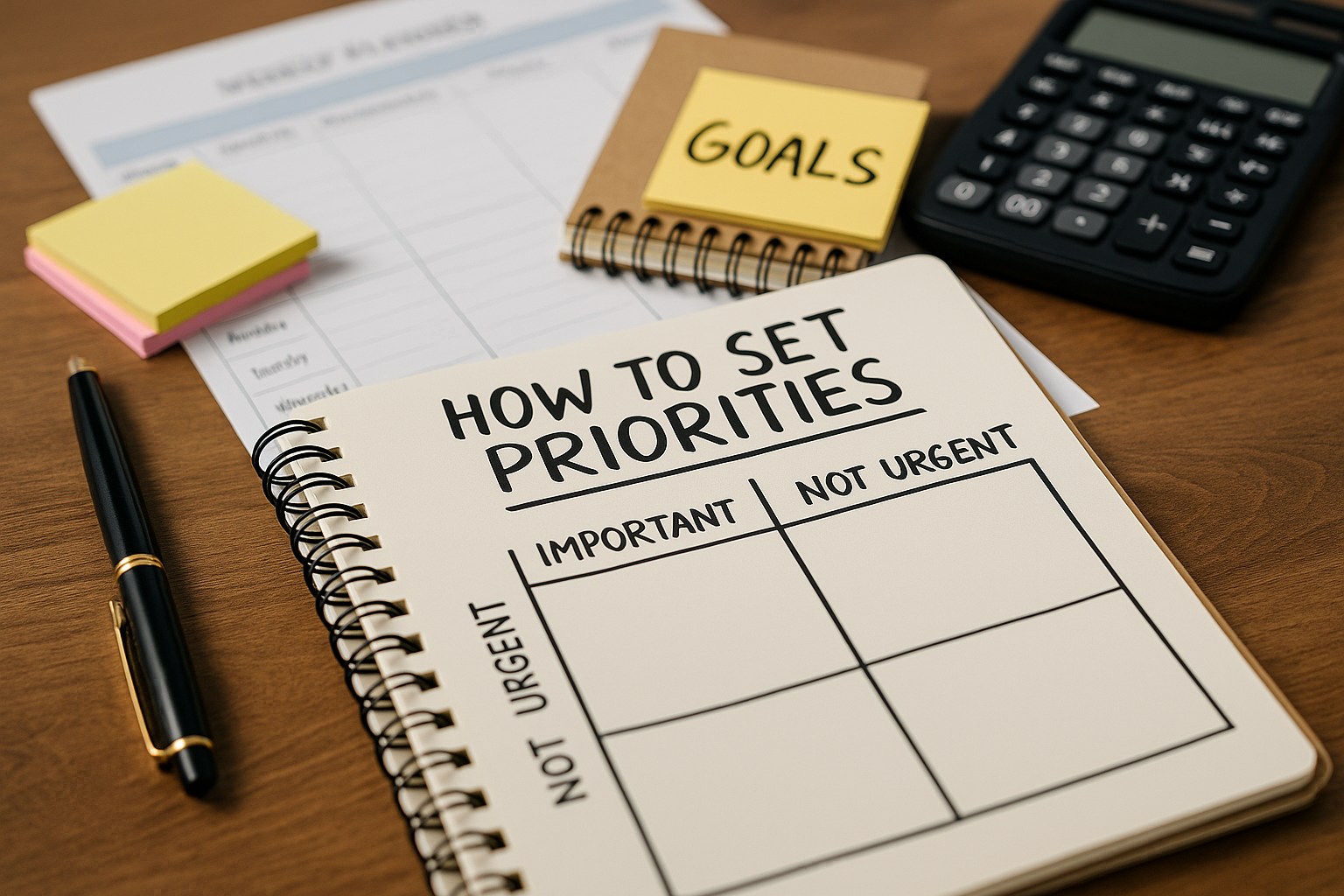In today’s fast-paced work environment, knowing how to set priorities effectively can make the difference between feeling overwhelmed and achieving meaningful progress. Productivity isn’t about doing more tasks — it’s about focusing on the right tasks. By learning to prioritize wisely, you can manage your workload efficiently, reduce stress, and accomplish your professional goals faster. In this article, we’ll explore practical strategies to help you set priorities and boost your productivity.
Understand the Difference Between Urgent and Important
Not all tasks are created equal. Some are urgent, while others are important — and they aren’t always the same.
- Urgent tasks demand immediate attention (like responding to an email about a missed deadline).
- Important tasks contribute to your long-term goals and values (like completing a major project).
Focus first on important tasks that move you toward your goals, rather than just reacting to whatever is most urgent at the moment.
Use the Eisenhower Matrix
A powerful tool for prioritization is the Eisenhower Matrix, which divides tasks into four categories:
- Urgent and Important: Do these immediately.
- Important but Not Urgent: Schedule a time to work on these.
- Urgent but Not Important: Delegate these if possible.
- Neither Urgent nor Important: Eliminate or minimize these activities.
This framework helps you visualize your workload and focus your energy on what truly matters.
Set Clear Goals
Having clear, specific goals gives you a roadmap for setting priorities. When you know what you’re aiming for, it becomes easier to determine which tasks deserve your attention. Set both short-term and long-term goals, and regularly review them to keep your priorities aligned.
Break Down Large Tasks
Big projects can seem overwhelming and cause procrastination. Break them into smaller, manageable tasks and prioritize those tasks based on urgency and impact. Completing small pieces consistently will keep you motivated and move you steadily toward completing the larger project.
Use Time-Blocking Techniques
Time-blocking involves scheduling specific periods in your day to work on particular tasks or projects. By allocating dedicated time to important work, you ensure it gets done without constant distractions. Protect your time blocks as if they were meetings — because they are appointments with yourself for deep, focused work.
Learn to Say No
Saying yes to every request can quickly fill your schedule with low-priority tasks. Politely but firmly decline requests that don’t align with your goals or current priorities. Every “yes” to something non-essential is a “no” to something important.
Review and Adjust Your Priorities Regularly
Priorities can change based on shifting deadlines, new projects, or organizational changes. Set aside time — daily, weekly, or monthly — to review your tasks and goals. Adjust your priorities as needed to stay aligned with your most important objectives.
Minimize Multitasking
Multitasking might feel productive, but it often leads to lower quality work and more errors. Focus on one task at a time, complete it fully, and then move on to the next. Single-tasking allows for deeper concentration and higher-quality output.
Celebrate Progress
Recognizing and celebrating your accomplishments, even small ones, helps maintain motivation and reinforces positive habits. Take a moment to appreciate your progress and the impact of working on your true priorities.
Master Your Time by Mastering Your Priorities
Setting clear priorities is the foundation of true productivity. By focusing on what’s most important, breaking down complex tasks, and managing your time strategically, you can work smarter, not harder. Start applying these techniques today to maximize your results and move confidently toward your professional goals.

